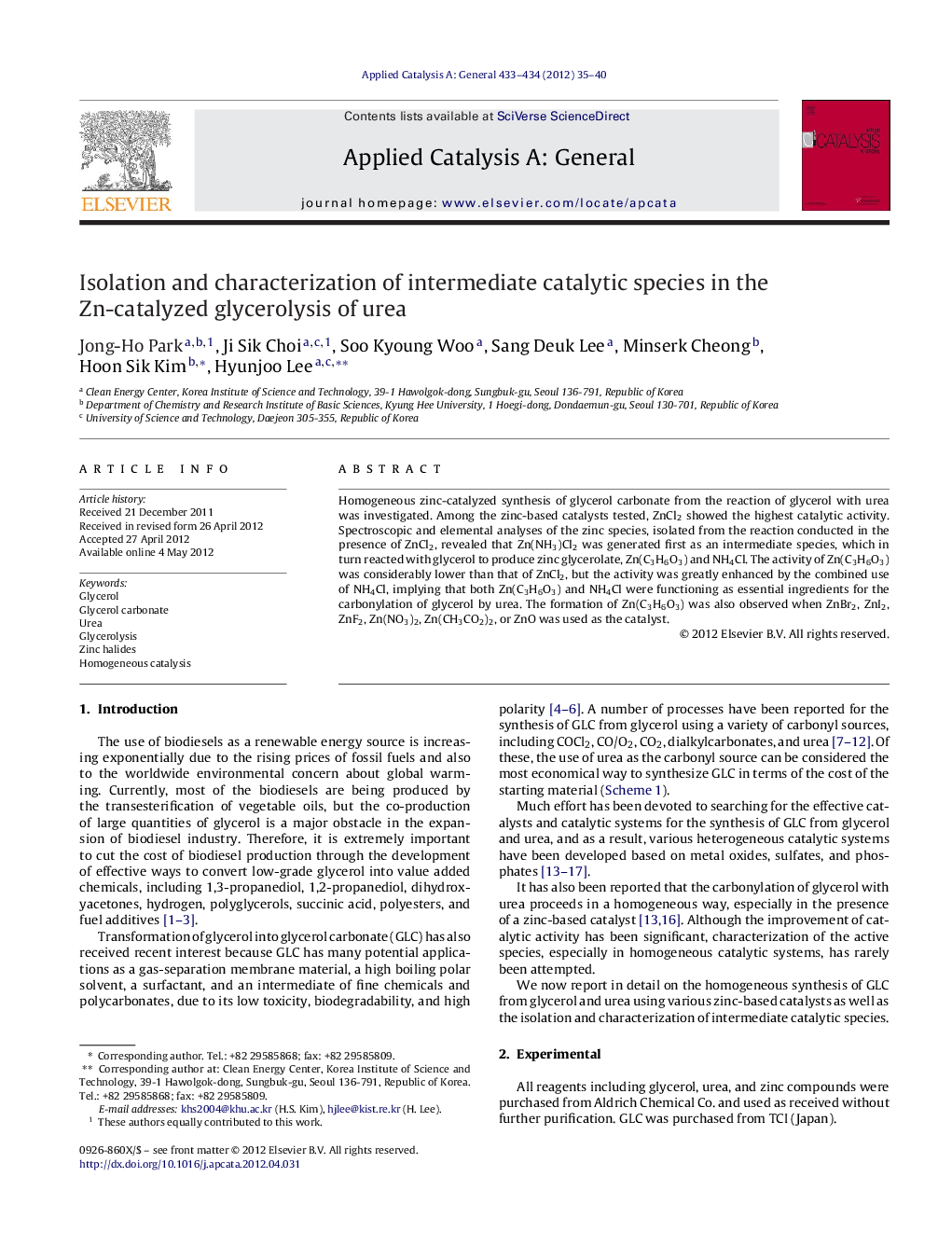| Article ID | Journal | Published Year | Pages | File Type |
|---|---|---|---|---|
| 40868 | Applied Catalysis A: General | 2012 | 6 Pages |
Homogeneous zinc-catalyzed synthesis of glycerol carbonate from the reaction of glycerol with urea was investigated. Among the zinc-based catalysts tested, ZnCl2 showed the highest catalytic activity. Spectroscopic and elemental analyses of the zinc species, isolated from the reaction conducted in the presence of ZnCl2, revealed that Zn(NH3)Cl2 was generated first as an intermediate species, which in turn reacted with glycerol to produce zinc glycerolate, Zn(C3H6O3) and NH4Cl. The activity of Zn(C3H6O3) was considerably lower than that of ZnCl2, but the activity was greatly enhanced by the combined use of NH4Cl, implying that both Zn(C3H6O3) and NH4Cl were functioning as essential ingredients for the carbonylation of glycerol by urea. The formation of Zn(C3H6O3) was also observed when ZnBr2, ZnI2, ZnF2, Zn(NO3)2, Zn(CH3CO2)2, or ZnO was used as the catalyst.
Graphical abstractFigure optionsDownload full-size imageDownload high-quality image (100 K)Download as PowerPoint slideHighlights► ZnCl2 showed the highest catalytic activity. ► Zinc glycerolate (Zn(C3H6O3)) and NH4Cl were formed from ZnCl2 via Zn(NH3)2Cl2. ► Zn(C3H6O3) plays a role in activating urea and NH4Cl functions to activate glycerol.
